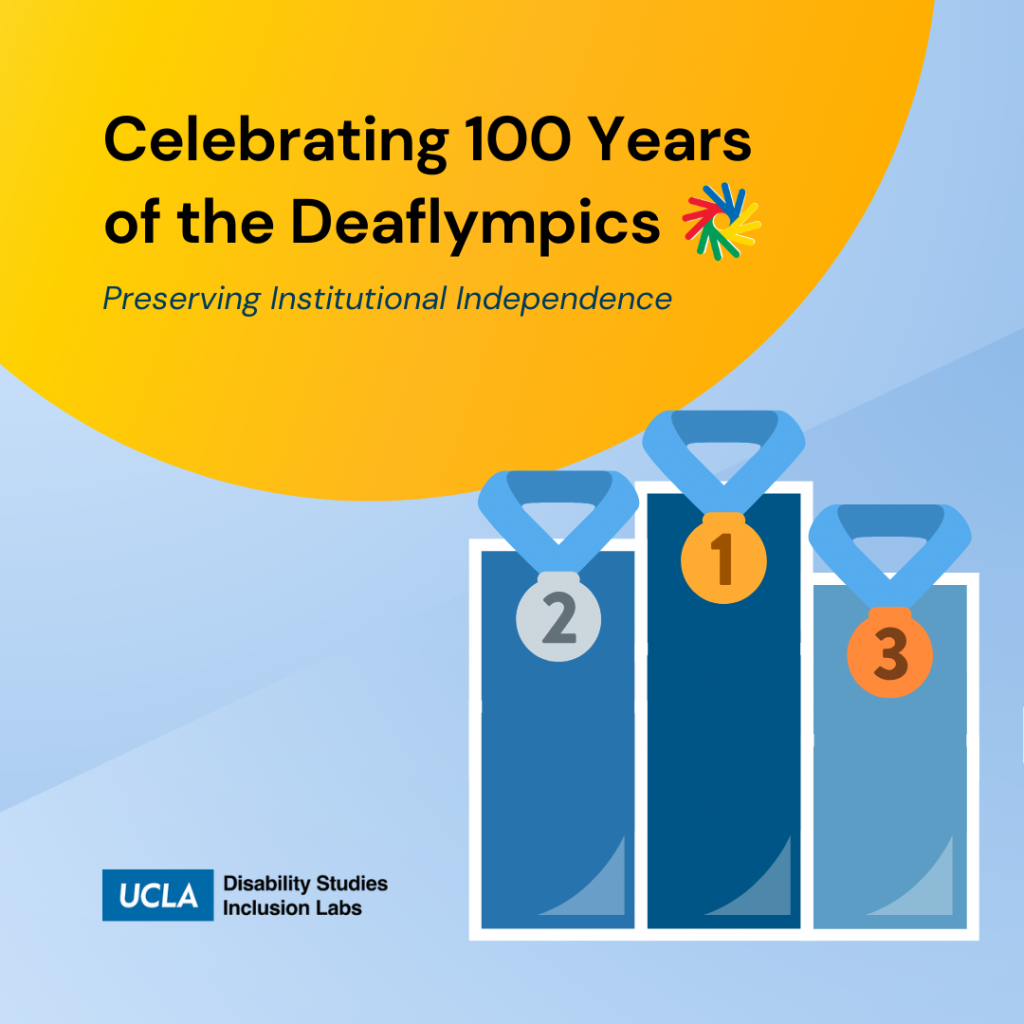Judy Mark was observing her students working in their four-person groups in her Autism Media Lab when she noticed one group quietly working on their laptops. No one was talking with each other.
Frustrated, she went over and asked them why they weren’t working together or even engaging with Gaby Valner, their group’s “community teacher” who has atypical Rett syndrome (which shares characteristics with non-speaking autism) and was assigned to work with them.
But they were working together, they explained. In fact, they were all typing on a shared Google doc, writing messages back and forth about the documentary film they’re producing as a group — a manifestation of the very inclusion they were learning about in the course.
“They decided not to speak, to get on the same level as Gaby,” said Mark, instructor of disability studies at UCLA.
Inclusion is at the heart of the Autism Media Lab, the inaugural UCLA Disability Inclusion Lab course co-taught by Mark and Sjoerd Oostrik, adjunct assistant professor of documentary filmmaking in the UCLA School of Theater, Film and Television. The 24 students in the course are joined by six community teachers, all of whom have non- or minimally speaking autism or related disabilities, who are working with the students to produce six short documentary films which will premiere at a screening on campus May 30.
The UCLA Disability Inclusion Lab is a cross-disciplinary initiative designed to reframe cultural understanding and practices around the concept of disability through academic courses and community engagement. Each lab will build and strengthen networks of faculty, staff, undergraduate and graduate students, and community leaders to impact the discourse and awareness surrounding disability.
The next disability inclusion lab is dancing disability, which will unite disabled dance artists from around the world for a weeklong dance workshop and public showcase June 23–28.
The UCLA College’s interdisciplinary disability studies minor was created in in 2007, giving students the opportunity to use “disability” as a lens to analyze and critique the body, society and culture from a variety of perspectives such as health sciences, public policy, technology, and the arts.
The Autism Media Lab focuses on the history and perspectives of autistic self-advocacy and neurodiversity, barriers to inclusion in various community settings, and shifting views and media portrayals of autism. The students’ films explore methods of inclusion for people who have autism in areas including education, friendship, and law enforcement.
Mark, Oostrid, teaching assistant Jingqiu Guan, and community teacher Neal Katz were invited to attend the United Nations’ World Autism Awareness Day event at UN headquarters in New York City on April 2. Mark and Katz, who used a device that spoke what he typed, each addressed adaptive technologies that enable people with non-speaking autism to communicate. They also showed a clip of the behind-the-scenes documentary that Oostrid and Guan are filming about the Autism Media Lab course.
With one or two people who have autism participating on every panel, Mark said the UN’s Autism Awareness Day event illustrated how far society has come in recognizing how important it is to include people with autism, or “self-advocates,” in these kinds of dialogues, not only to give them a voice but also to educate others.
“That’s exactly what we’re teaching in our class,” Mark said. “We have to listen to these voices. The students don’t necessarily know better than their peers with autism. We need to include them in decision-making about their own lives.”
Nacha Promsatian, a senior anthropology major, is part of the group working with Katz on a film about autism and public safety. The film shows Katz reenacting an experience from his life, when a man in Katz’s neighborhood called the police after watching Katz linger in front of his house. The incident is a teachable moment about how to interact with individuals with non-speaking autism and the challenges both sides encounter during these interactions.
“We want the film to be a conversation starter,” Promsatian said. “People have fear because they don’t understand the other person, and for people with non-speaking autism not being able to communicate is also a fear. In our film we’re trying to grasp both perspectives, the police officer and Neal.”
The group has been collaborating with the Los Angeles Police Department on the film, and the department has said that it would like to show it to officers in future trainings.
Like the group working with Valner, Promsatian and her groupmates have also used Google docs to communicate with Katz. She said working with him requires a bit of patience, since he takes longer to respond in conversations, but he was so excited to be in the film and reenact his scenes.
“Every time we thought he was a little frustrated because he walked away from us, he said ‘I’m having the best time right now,’” she said. “Neal’s just a really cool person in general.”
Mark, Promsatian, and Guan acknowledge that inclusion is just plain hard, no matter how willing each party is to make it work. But the instructors hope the Autism Media Lab demonstrates how important it is to try.
“I think the course exposes both the opportunities and the challenges in efforts toward achieving more inclusion of neuro-atypical population in an often normalized institutional space,” Guan said.
For the students, who hail from a variety of majors from film to human biology, the course has been an enlightening experience. Promsatian said that while she started out not knowing much about what autism is, she has newfound empathy and awareness that will inform how she treats everyone, not just individuals with disabilities.
“The first time seeing someone type out their thoughts while seeing how they react and their tics, my perspective completely changed,” she said. “Classes like this should be offered more because these are skill sets we can bring out into the world and just be nicer to other people.”



